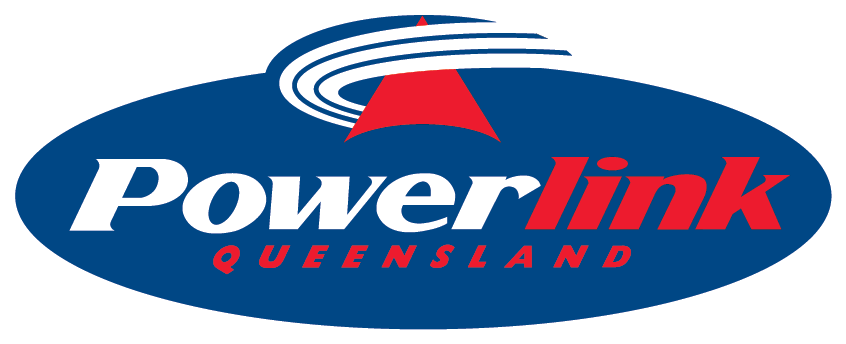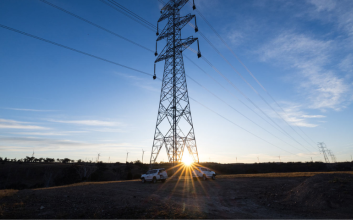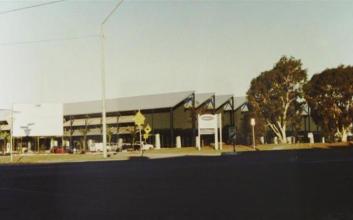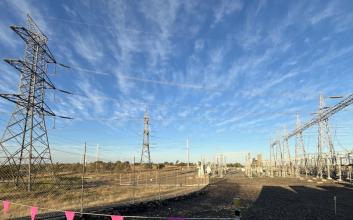This week marks the tenth anniversary of Cyclone Larry – an event described as a ‘moment of truth’ for Powerlink and Ergon Energy.
The category five cyclone struck the North Queensland coast at Innisfail on the morning of March 20, 2006, devastating local communities and setting off a recovery effort that attracted national attention.
The most powerful cyclone to hit Queensland in almost a century, it destroyed homes and buildings, flattened crops, stripped vegetation and damaged infrastructure.
Treasurer Curtis Pitt said the scene confronting the region was one of overwhelming devastation.
“For many people their lives changed in a matter of hours. For that reason, this cyclone is still deeply etched in the minds of North Queenslanders,” Mr Pitt said.
“It was described as a moment of truth for Powerlink Queensland, as it became clear that the transmission network supplying bulk electricity to Ergon Energy had just sustained the worst damage in its history.
“Power was cut to 140,000 customers across the Far North region. Seven 132kV transmission lines spanning 300 kilometres between Ingham and Kamerunga, near Cairns, were out of service, cyclonic winds had destroyed five steel transmission towers and damaged a further two, and five high voltage substations were out of service.
“Restoring electricity supply to the people of Innisfail and other impacted areas was the first step in helping them start to put their lives back together but Powerlink and Ergon Energy were facing incredibly complex engineering challenges to get the network back into service.
“We should also remember that with for years the region was hit again, this time by Cyclone Yasi which further tested Innisfail and Cassawory Coast communities.
“But both events showed we are very strong communities and will always come together in times of crisis,” Mr Pitt said.
Energy Minister Mark Bailey said the replacement of a collapsed transmission tower at Babinda was critical in restoring power and was an historic moment that captured national attention.
“This tower was a crucial element in restoring the Innisfail to Edmonton transmission line that supplied power to the severely impacted Innisfail area,” Mr Bailey said.
“The conventional option of dismantling the tower and using road transport would have taken many days due to the weather and local flooding.
“Working closely with local emergency response teams, Powerlink was able to secure the use of an Australian Defence Force (ADF) Chinook to airlift a 32 metre high, four tonne steel lattice tower from Townsville to a remote canefield in Babinda in just two hours.
“This was the first time Powerlink had used a helicopter to transport a complete tower in these conditions. This mammoth team effort between Powerlink, ADF, Main Roads Department and Ergon Energy restored bulk power supply to Innisfail just four days after the cyclone hit.”
Powerlink Chief Executive Merryn York said Cyclone Larry was a striking example of the innovation and dedication that lies at the heart of Powerlink and Ergon Energy’s approach to operating the electricity networks in Queensland.
“A highlight of this response was the strong cooperation between Powerlink and Ergon Energy. Powerlink has a long-standing agreement in place with Ergon Energy to maintain and repair Powerlink’s network in central and northern Queensland. Their teams worked side by side with our crews to repair and restore the devastated electricity network.
“Our strong response to this cyclone earned the praise of individuals and organisations, including the Queensland Government and Major-General Peter Cosgrove who took leadership of the Government’s cyclone restoration efforts.
“Mr Cosgrove was quoted as saying ‘Powerlink and Ergon both did outstanding work. When we tell the story of the cyclone, I believe their names will be up there with great prominence as champions of the relief effort".
“We learnt a great deal from the sheer scale of this response and restoration effort. The benefit of this experience is that we are now better prepared than ever for the extremes that cyclones and wild weather can bring.”



